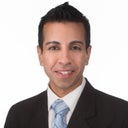It is true that heavier implants stretch the muscle and skin more, and may bottom out more easily due to weight, especially in patients with skin laxity. An in-person consultation allows us to take measurements and inspect the skin laxity for the ability to take a larger implant. Note that you have some asymmetry of your breast hang on the two sides and this would be addressed in the discussion as to what options we have for improving the symmetry with and without a small lift.As for implant style and size, often the widest implant that fits the patient's base diameter and is within the volume range the patient seeks would be best; if a patient selects an unnecessarily narrow or excessively high profile implant, she may end up with wide cleavage or implants that can move too much in the pocket. However, it also depends on the type of projection being sought. In general, implant volume is determined by a combination of estimating the patient's own breast volume and the target cup sizes, and determining a range of added cc's of volume that would be expected to achieve the goal. Implants come in a variety of "profiles," which is a term that describes how much of the volume is used to create width vs. forward projection of the breast. Moderate profile implants are wider and flatter, while high and ultra high profile implants are narrower and taller, and "moderate plus" implants are somewhere in between. A patient with a very narrow chest wall and little native breast tissue is often a good candidate for a high profile implant, whereas patients with a lot of native breast tissue and a wide chest may do better with a moderate or moderate plus implants style.














